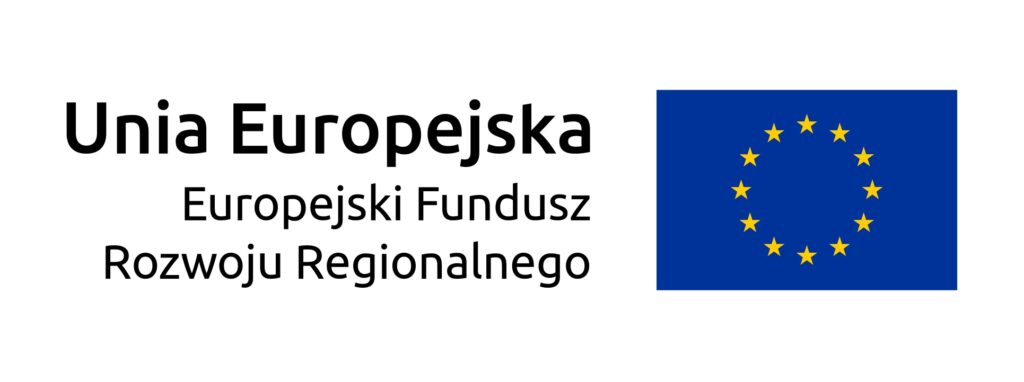It started with an idea. From the idea came the design of a mobile application. Later – the finished product. And… what next? How to get the app into stores and make it available to users? “This is a slightly more complicated topic than in the case of browser-based applications,”—says one of the two main brains of our company, Matthew Wojcik. From this article, you will learn how to publish a mobile app step by step.
Google Play, the App Store, and what else?
So let’s start with why publishing browser apps is easier. The whole process is quite short – it only takes about an hour. To start with, you need to buy any hosting, that is, “space” on the server. The second step is to upload the application there and… and you’re done. Publishing mobile apps is more difficult because you download them from the stores.
The two largest app stores are familiar to virtually everyone. We are talking about Google Play, for Android devices, and the App Store for iOS, i.e., iPads, iPhones, and iPods touch. The former offers not only apps and games, but also music, books, TV shows, and movies. It is currently the largest app store for mobile devices, with some 3.5 million products available, and an annual number of downloads settling at… 111 billion.
The App Store offers apps and games, paid and free, as well as gift cards. It is, in turn, the oldest mobile app store. When it launched, it had just 500 apps; now there are more than 2 million. “Compared to Google Play, that’s very little.” — someone might think. Yes, but this is purely due to the fact that Apple has much stricter requirements for products provided by third-party developers. Quality, not quantity!
In 2011, the older brethren were joined by another – AppGallery, an Android store developed by Huawei, which was created by a dispute between Huawei and Google. Samsung also has its own store. It’s the Galaxy Store, available in more than 160 countries, or wherever the brand’s phones are sold. There are many, many more stores. You can mention Aptoide, Amazon Appstore, or F-Droid, among others.
To begin with – creating an account in the store
To make a mobile application available to the store, to begin with, you need to create an account in the store. This involves fees – in Google Play it costs $25, or about 120 zlotys. You pay for the account once, and in return, you get the ability to publish an unlimited number of paid and free apps. An account in the App Store is more expensive – the annual fee (note!) is $99, or roughly 470 zlotys.
Google Play
Let’s start with Google Play. You create an account through the Developer Console. There, you need to select the name of the programmer and complete all the account details required in the form. Verification of the account can take about two days. If you want to publish paid apps, you still need to link the account to Google Payments Merchant Center – you will also set up a payment account in the Developer Console, under the “Financial Reports” tab.
App Store
The App Store offers registration as an individual or organization. It should be added that the account of an individual or a business is limited, which does not allow you to later invite other members to join the team. In the former case, you will need to provide basic information such as name, address, and contact information, and enable 2 Factor Apple ID authentication. If you register as an organization, you will need a DUNS, or Data Universal Numbering System Number, which is needed to verify the company’s legal status. The next step is to verify the legal personality of the organization. Step No. 3 – acquiring the authority to bind the company with legal contracts. Such powers are: the owner of the organization, its founder, senior managers, or members of the executive team. The last thing Apple requires is a legal, public website. “In the case of the AppStore, there’s a little more hassle, because they have to verify that we’re actually us. When we set up an organization’s account, we provide the details of a specific person, and usually, someone from the AppStore calls to confirm it. This process takes about two weeks, so it’s important not to leave it to the end,” Matthew explains.
Application profile – tell us more about it
The next step is to create an app profile, or product description, which will be seen by store users. This process is similar in both Google Play and App Store. After clicking on the icon for creating an app, a form will open for us, in which we need to provide basic information about the product. These will include the name of the app, its language, type (app or game), categories, potential age range of users, a description of what the app is used for, and information about whether it contains ads and whether it is paid or not. In addition, you will need to submit an icon for the app, as well as screenshots at the correct resolution showing what the app looks like “inside.”
Of the technical things in the application profile creation form, you will still need the URL to the company’s privacy policy, the address of the organization’s support page, contact information, and acceptance of the program’s policies and export regulations after reviewing the documents.
What does in-store app verification consist of?
When the application profile is ready, we can move on to publishing. Almost. After generating the application file and sending it to the store, we still need to submit the product for verification. After verification, we will receive information on whether everything agrees with the description provided and the store’s rules and regulations, but whether something needs to be corrected.
Google Play
On Google Play, app verification is handled by simulators. “They catch if there are any bugs or if the app doesn’t contain some entries that are out of line with the terms and conditions of a particular store. Because it must be added that with each update of Mobile Operating Systems, new restrictions appear,” explains our CEO. This process usually takes about 48 hours, but it can also take a day or two weeks, as Google Play does not have a specific maximum waiting time.
App Store
In the App Store, verification is carried out by people who check that all materials, described on the app’s profile, comply with the store’s guidelines and reality. They also test the app and verify that it complies with the store’s rules. If something doesn’t comply, we get a message highlighting the points of the rules that the app violates. Due to the fact that this is done by “real” people and not automatons, the verification process in the Apple Store is much stricter than in the case of Google Play. “Sometimes you also have to submit materials that better show the app, because it may happen that the app can’t be tested without some physical device that the app naturally connects to in order to work properly, such as an app to control air conditioning. Then they ask you to send a video to see what’s going on in that app.” — Matthew adds. On the App Store, the process also takes about 48 hours, although it can take longer.
Tests, trials, and corrections
Even before the application hits the “store shelves”, testing should be carried out. This makes it possible to see if everything works as it should, or if something needs to be improved. It’s also a good place to show the customer how the app looks and works, and to gather user feedback before releasing the product to the public.
Google Play
Google Play offers three testing paths. The first is an internal test, which allows you to grant access to the app to up to 100 testers. They are added to the test using their email addresses. They will be able to participate in this stage, even if the tester is located in a country where the app will not be available. They will also have free access to the paid version of the product. In addition, if they are included in the list of licensed testers, they will also not have to pay for in-app purchases. Device exclusions also do not apply in internal testing.
Another path is closed testing. Here, there can be far more testers – Google offers to create 200 mailing lists, and each list can include two thousand users. From the Developer Console, you can also choose which organization will have access to testing. This allows administrators of that organization to add testers.
The final stage is open testing, which can be compared to pre-release movie screenings. This means that the test version of the application will be available in the store for users who have marked the option to be beta testers in the store, which gives them the opportunity to install Beta versions from the open tests. Anyone who has the app’s URL will also have access to the open test. Google is also giving the option to mark whether the number of testers is unlimited or whether there is to be a specific limit.
App Store
Apple, in turn, has a service called TestFlight. It allows applications to be made available to testers, both internal and external, who can then send feedback to developers. It also signals developers about possible failures. In this case, testers are invited through iTunes Connect.
Or can it go faster?
There are also ways to minimize the waiting time for verification. It is possible to send the application to the store for approval earlier, even before you plan to implement it publicly. In this case, you can already wait with a verified product for the release day. Just take into account that in the App Store apps are verified by people, so it may happen that the first verification will take place without problems, and later another person will check it and find some discrepancies with the rules. However, the stores also give you the opportunity to schedule the app to be published on a given date. The way it works is that by giving the app for verification, we choose the mode of publishing it, so we can publish it right away, manually when we want, or we specify the date and time when it should go in. If it has been verified and validated by then, it will be published on a given date.
Google Play
Google Play also offers pre-registration, that is, activation of the app’s product page 90 days before its official release. This will allow users to sign up for a waiting list, and after the release they will receive a notification about the availability of the product or the app will automatically be installed on their device. It is even possible to set up a reward for those who sign up for the app before the release.
App Store
The App Store also has such an option, only here it is called a preorder. The duration is longer than in Google Play – preorders can last up to 6 months. It is also worthwhile to try to get an award, which is given by the editors. To do this, you need to invite them to tests, during which they will assess the graphic level and check whether… the application provides good entertainment. You should also think about adapting the application for different distribution countries, that is, preparing a description and screenshots in the appropriate language.
Putting a product into circulation is not as difficult as you might think. Instead, it can be quite time-consuming, so remember: don’t leave it to the last minute! However, if after reading the article you think it’s still too much work and you’re not sure if you can handle it, you’re welcome to join us. Our team personally introduces clients’ applications to the stores and takes the whole publishing process on their backs, so you as the client have a ready application in the store and more time for important things.









